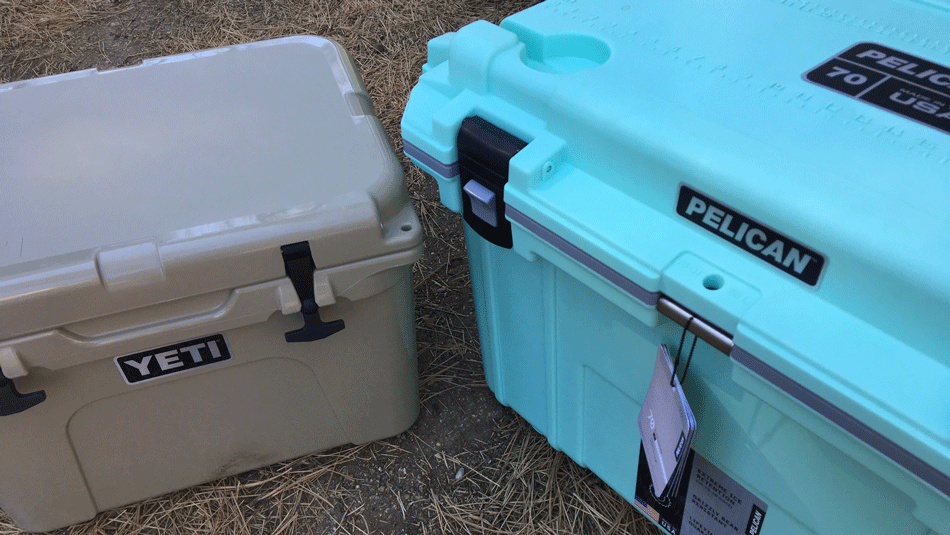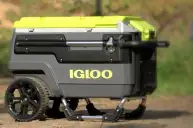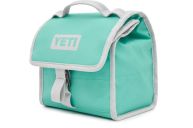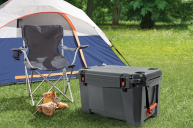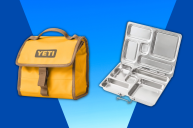When it comes to coolers, YETI has a reputation for being ahead of the class. Their rugged, reliable coolers are durable enough to keep out a grizzly bear and have an incredible ice retention that conventional coolers don't even compare to. No doubt, YETI is top notch. But they're not the only ones on the market that contain these boasting features. Pelican creates a line of premium coolers that when you look at the specs, can cause quite the conundrum when choosing between the two. That's why I decided to do a little ice experiment, Pelican cooler vs YETI cooler.
Videos by Wide Open Country
Thanks to my better half letting me kidnap his YETI Tundra 35 for a week, I tested it out against my Pelican 70QT Elite. In an attempt to determine which would keep food colder longer, I decided to do the simplest test possible with an ice test. Since the coolers vary in size, I took into account how much each holds and divided ice among the two accordingly. I then left it inside the cooler to melt for a week. Each cooler was only opened once a day to examine how much ice had melted.
The results? Take a look.
Day 1: How I packed in the ice.
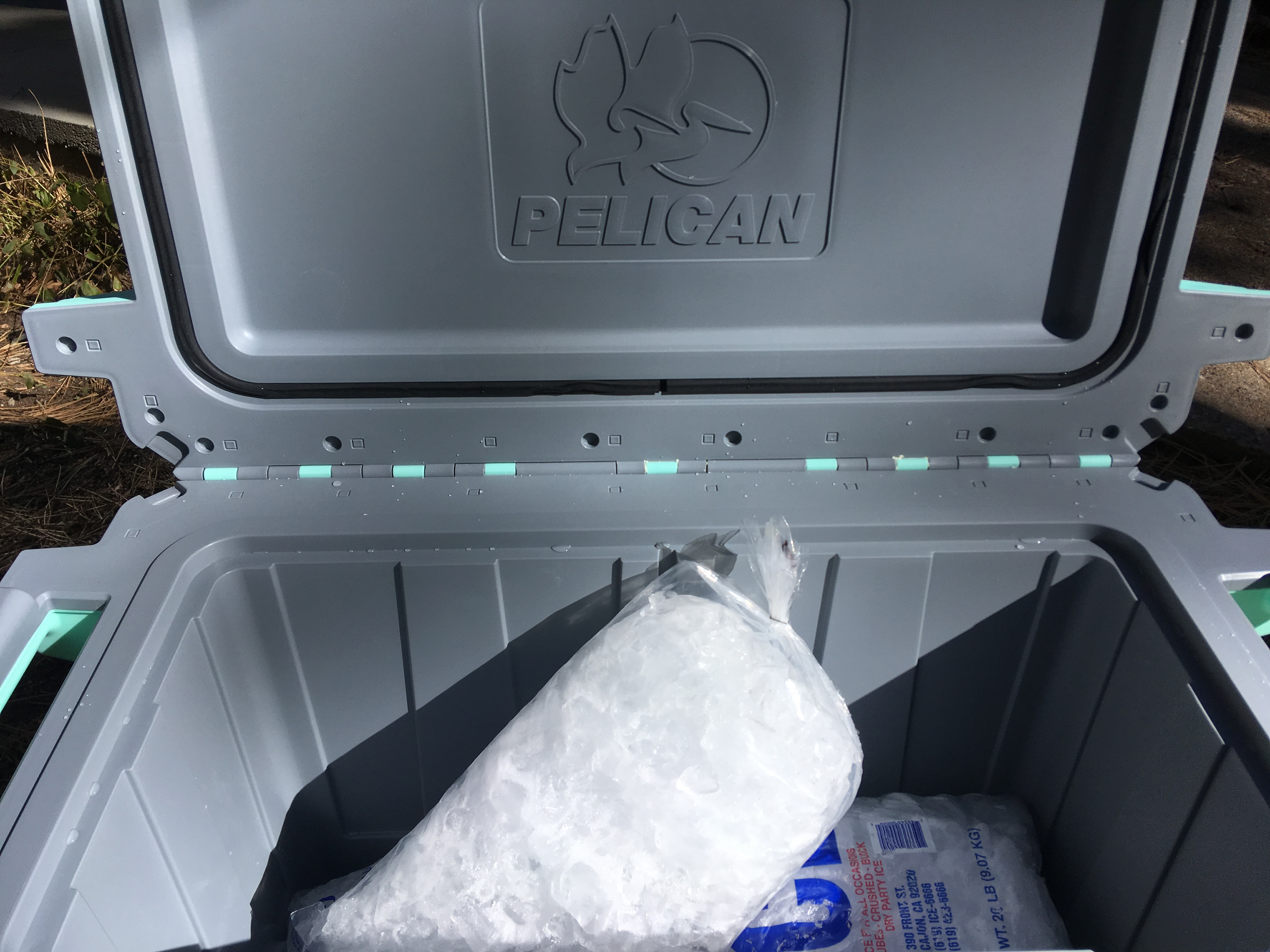
Carissa Stanz
I filled the coolers with ice and locked them down. My prediction was that the ice would all be melted by the end of the week. As to which would have the best ice retention, I was putting my bets on Pelican.
The high-quality Pelican line claims their coolers have an "elite chilling power" with up to 10 days ice retention - eight days for the Pelican Elite 70QT - whereas the YETI Tundra series claims retention varies, based on "testing conditions and not real life situations." Already, I'm intrigued.
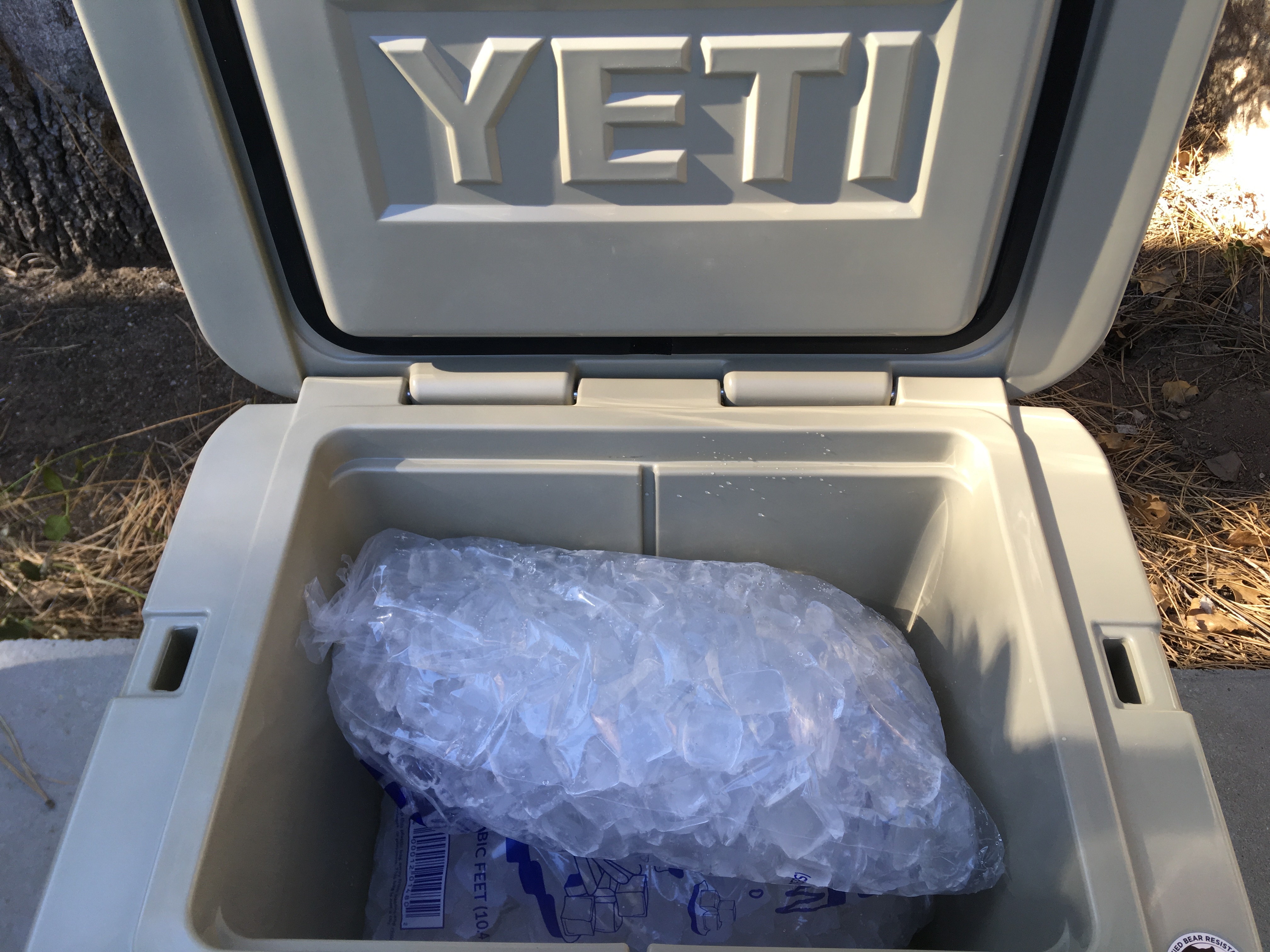
Carissa Stanz
Day 2: The ice is solid.
After 24 hours of loading the coolers, I checked to see how everything was going. The ice had barely changed which was to be expected - these are elite coolers after all.
Day 3: The signs of melting are barely noticeable.
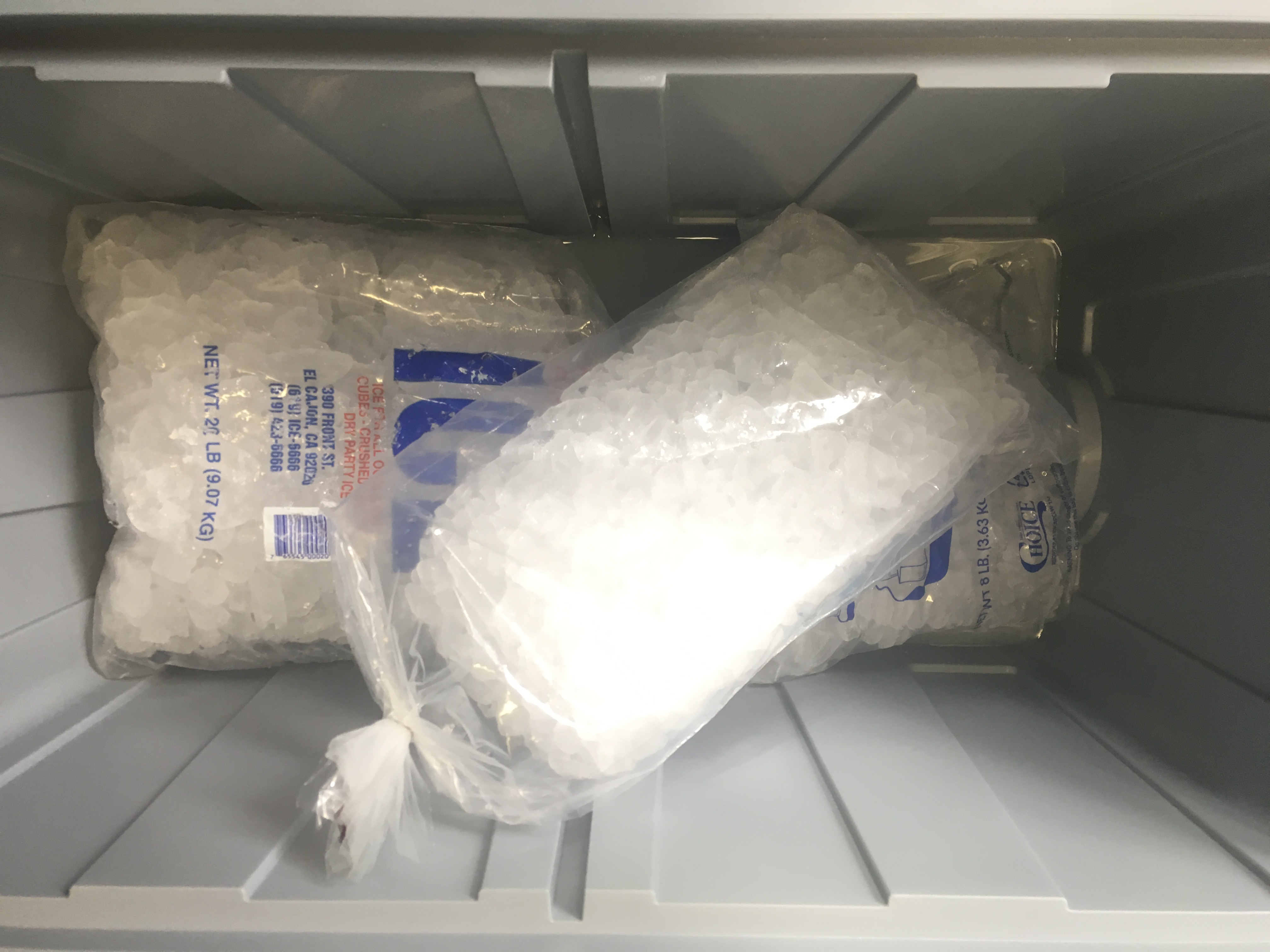
Carissa Stanz
I could see some liquid on the bottom of the ice as it had started to melt, but not by much. These blocks are still frozen solid.
Note: The Pelican shown above and the YETI shown below.
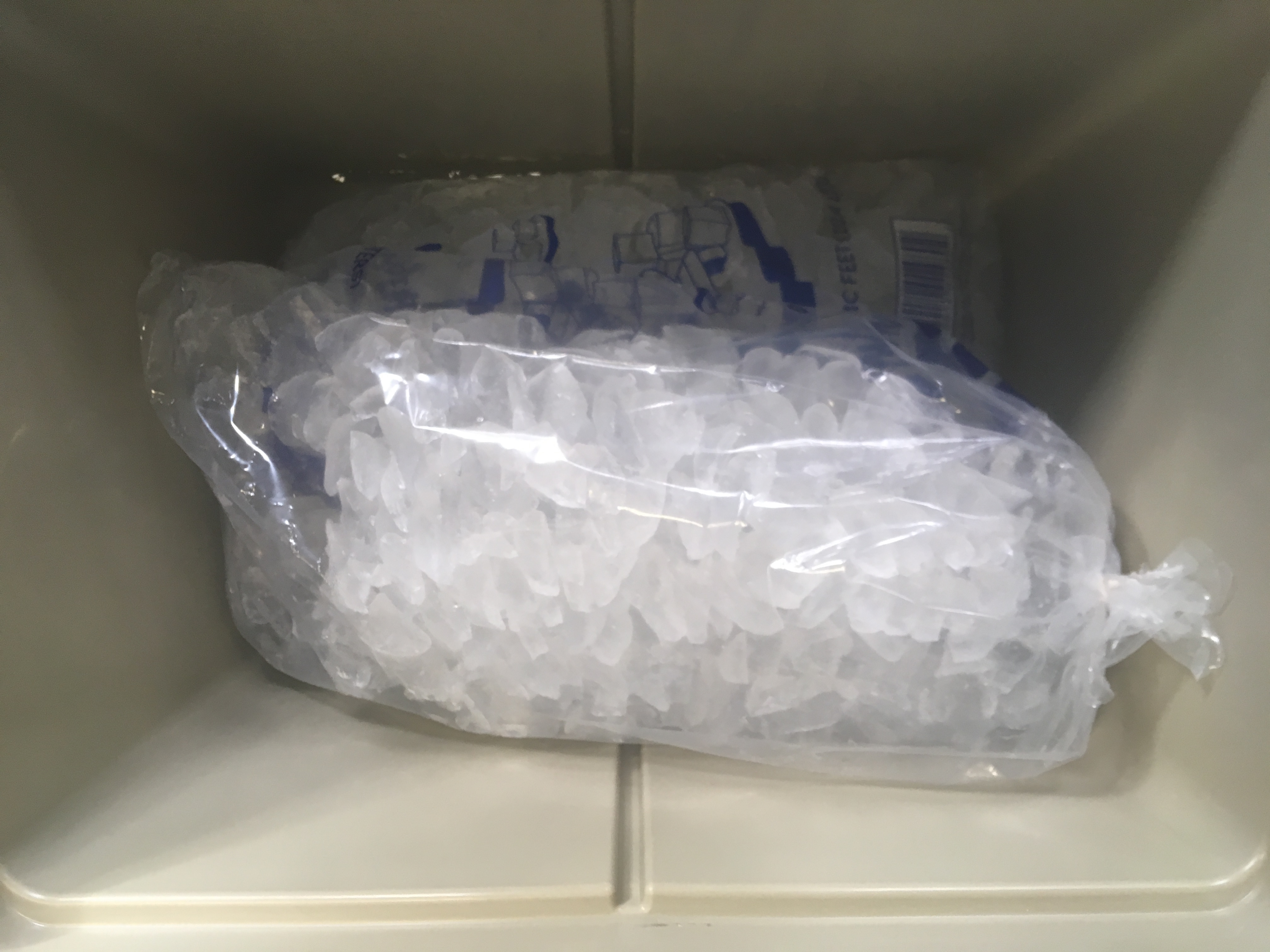
Carissa Stanz
Day 4: Hardly any difference from Day 3.
The ice in both coolers is still holding up pretty well. There is some more liquid forming on the bottom, but it's still too early to tell which will come out on top.
Day 5: The ice begins to melt.
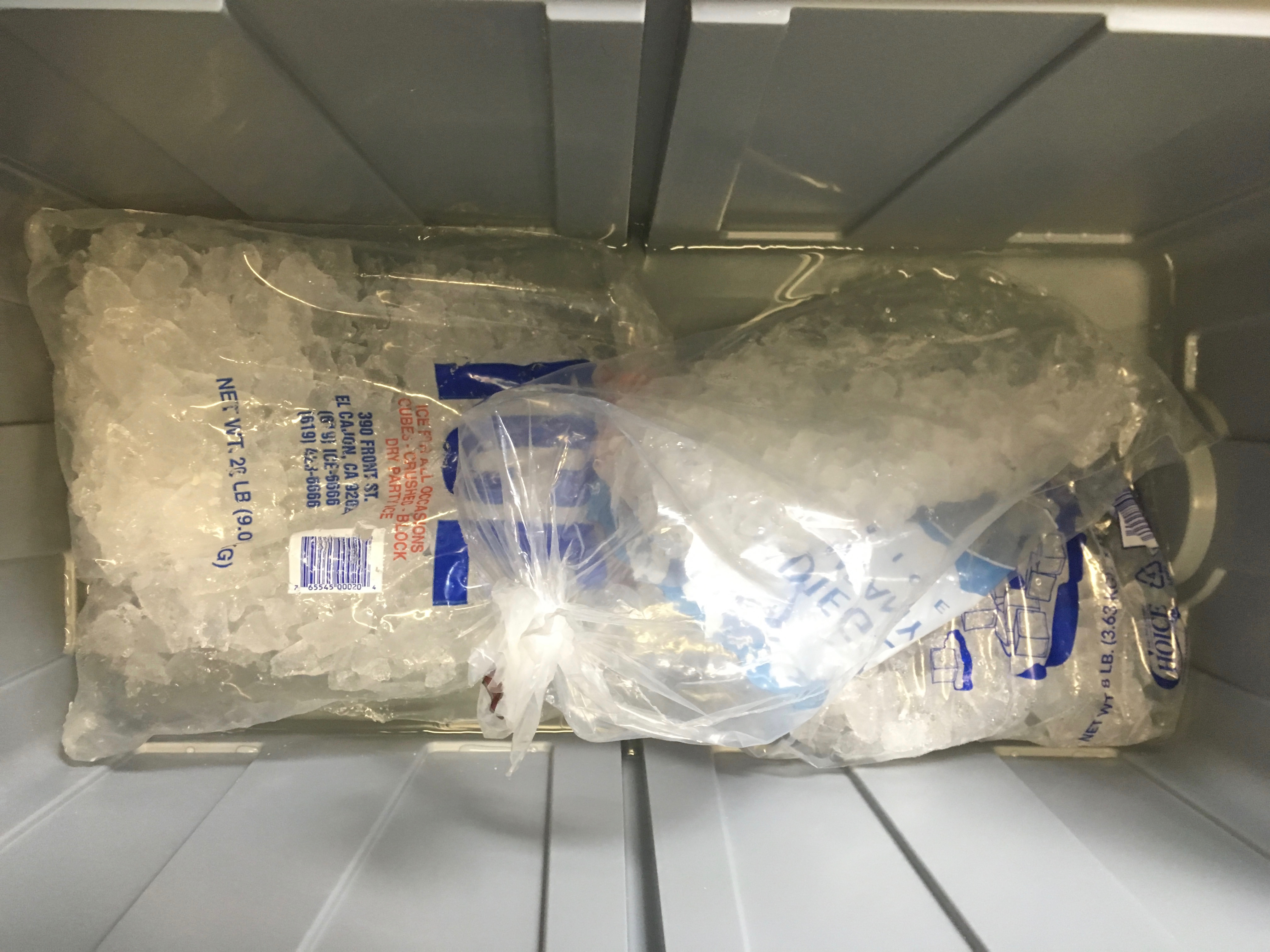
Carissa Stanz
I was beginning to wonder if the ice would ever melt to a significant degree. By day five, the ice blocks were noticeably beginning to turn to liquid.
Note: The Pelican shown above and the YETI shown below.
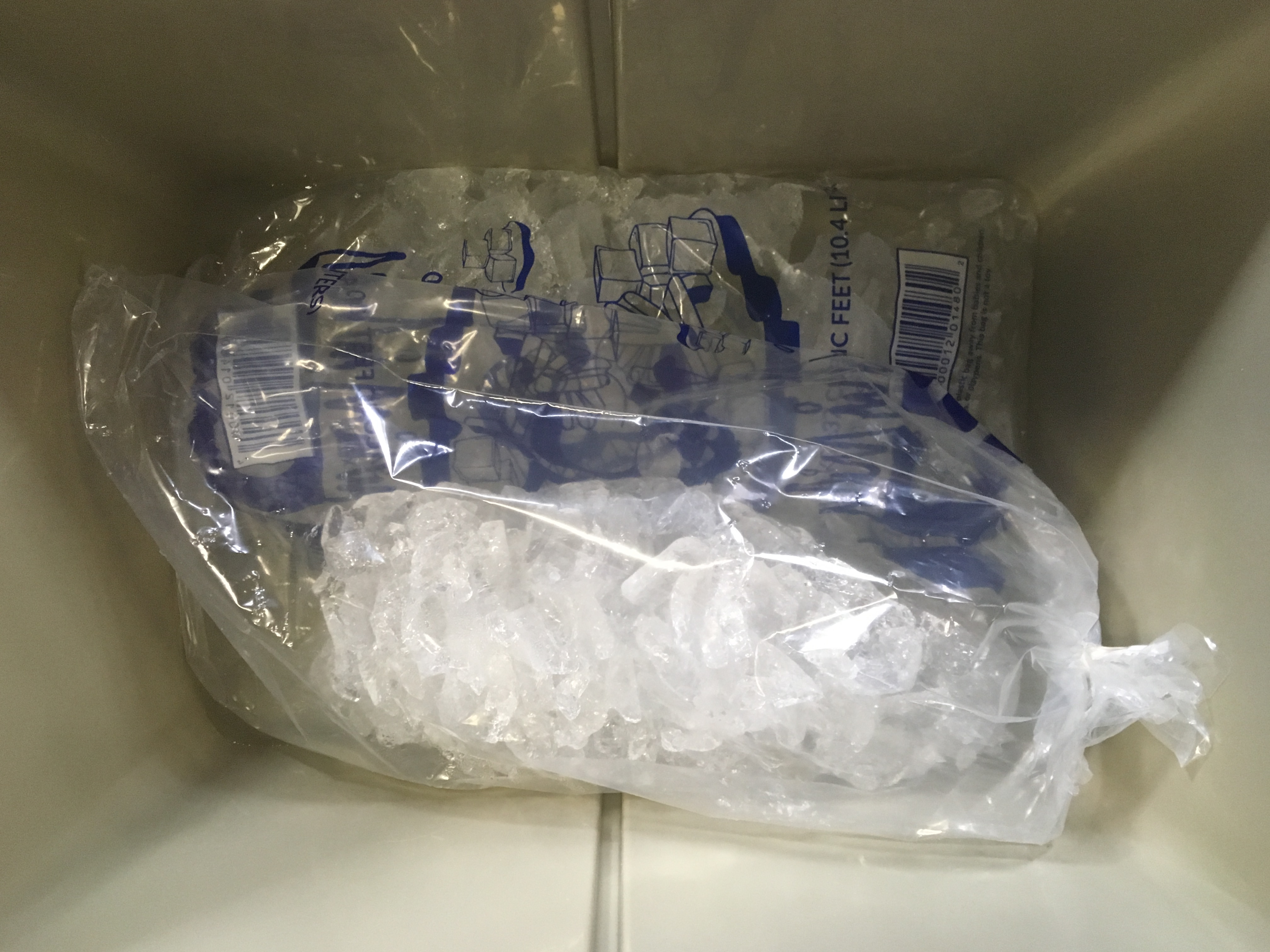
Carissa Stanz
Day 6: There are still signs of ice, but not much.
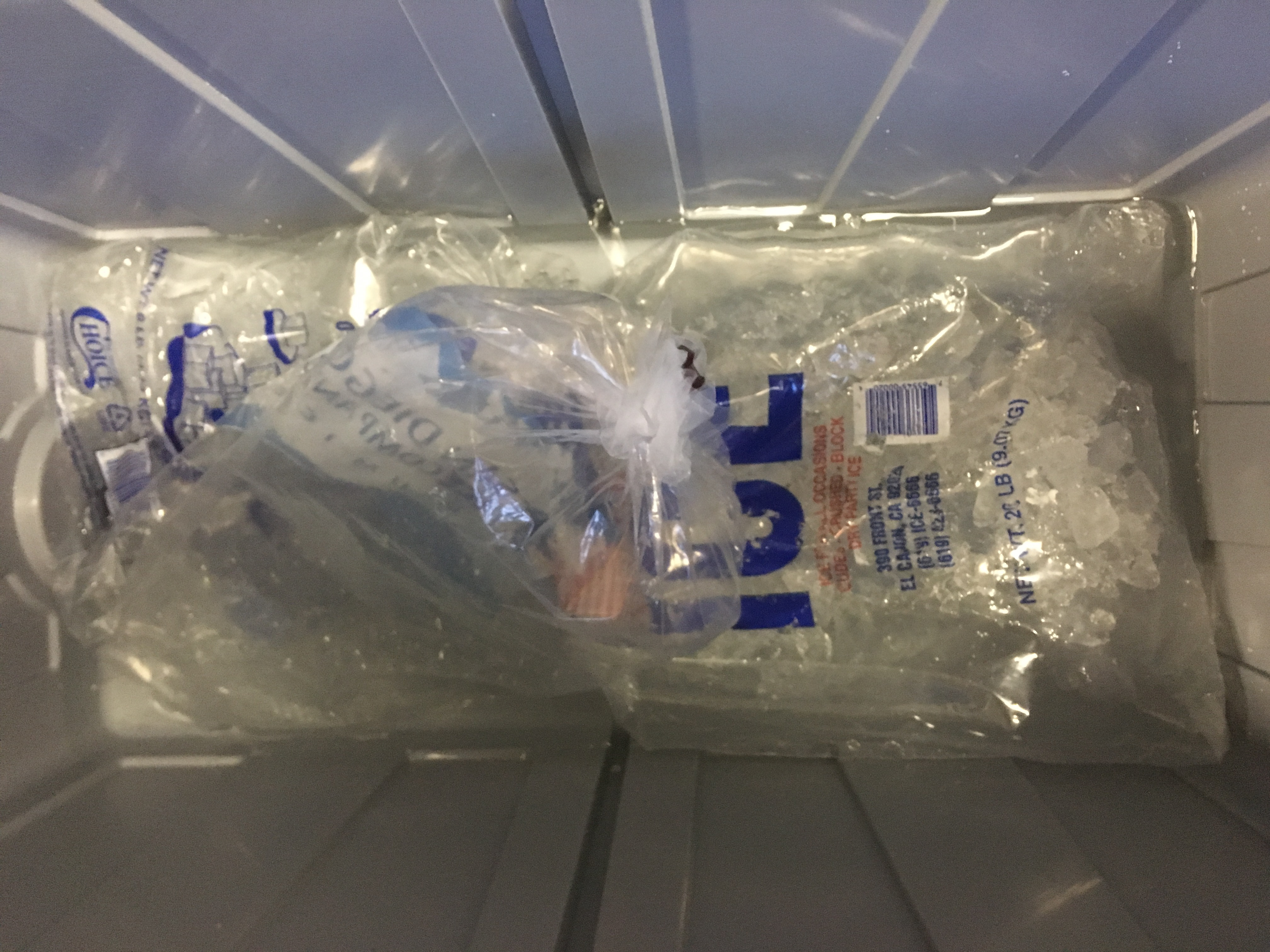
Carissa Stanz
With the week almost up, I was convinced there would be a big difference in which cooler had more ice at this point. Judging by what was in it, these two are still neck-and-neck.
Note: The Pelican shown above and the YETI shown below.
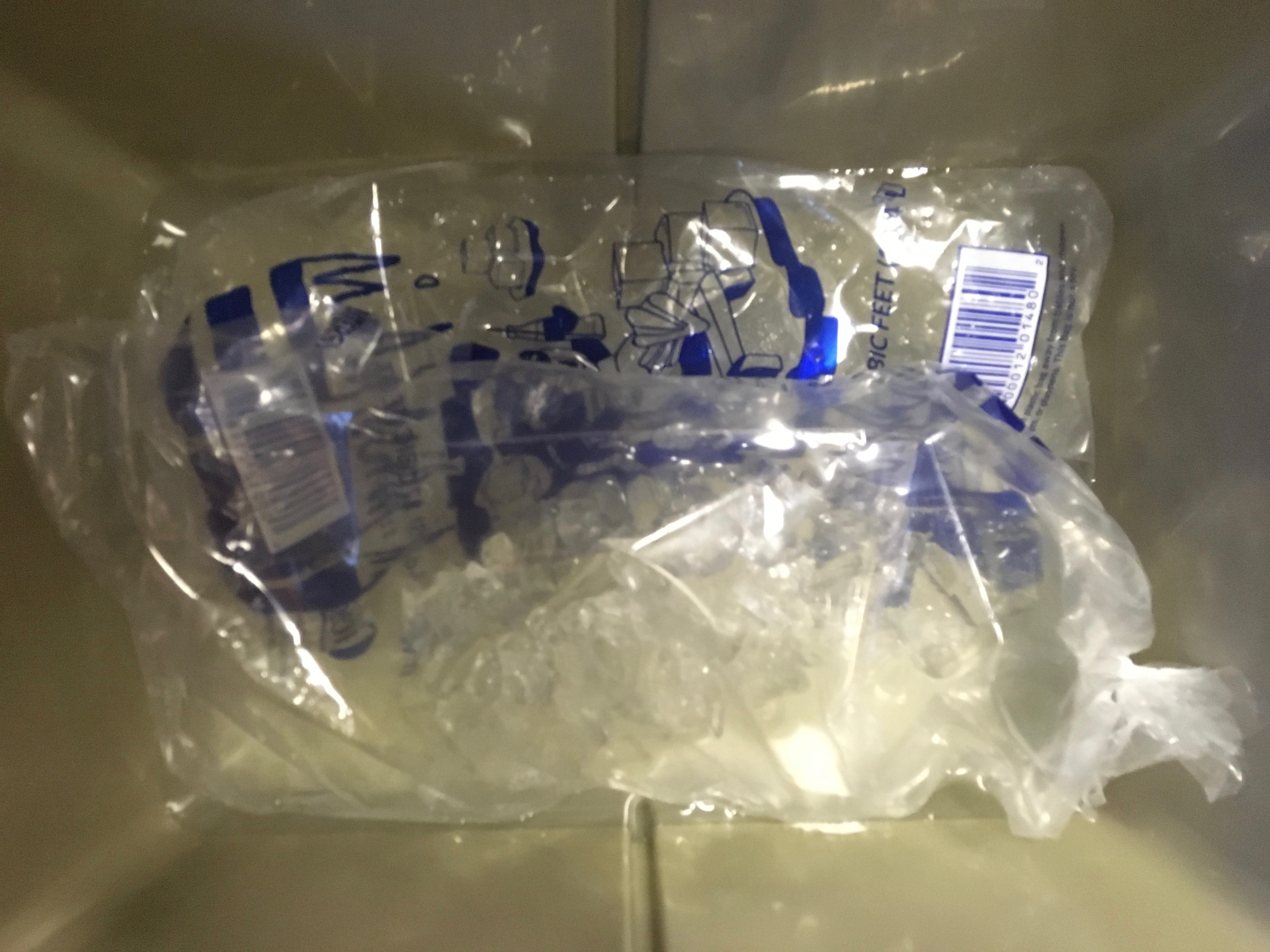
Carissa Stanz
Day 7: The final day's test.
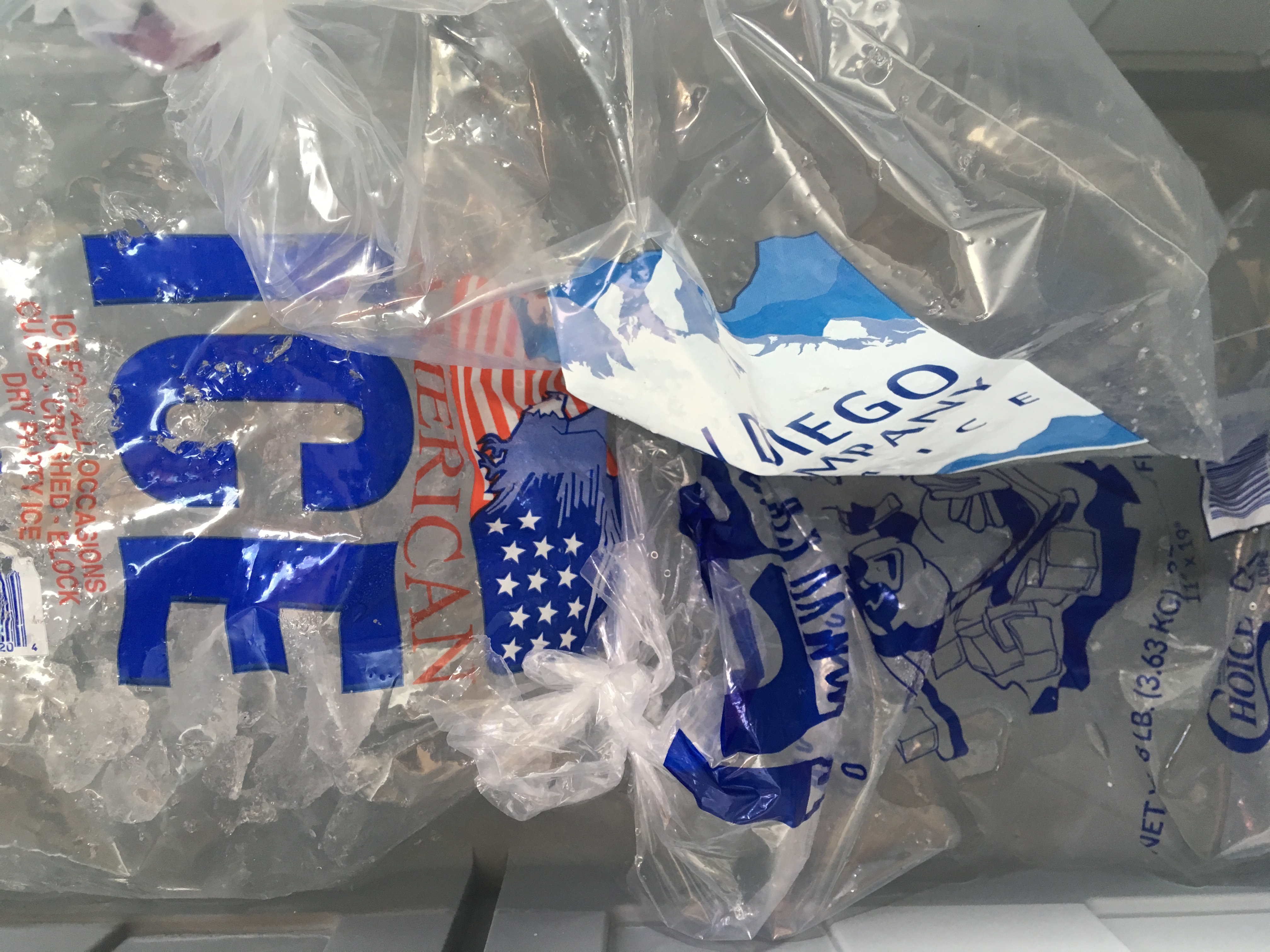
Carissa Stanz
The last day of the trial, and there is the faintest sign of ice in both coolers. While the Pelican may not have lasted nine days, I'm still convinced that the ice retention and features of both coolers are better than your standard ice chest.
So which one has more ice than liquid? I'd say they are both on par, calling it a tie. While I expected one to out last the other, this experiment showed that both are great coolers worthy of buying.
Note: The Pelican shown above and the YETI shown below.
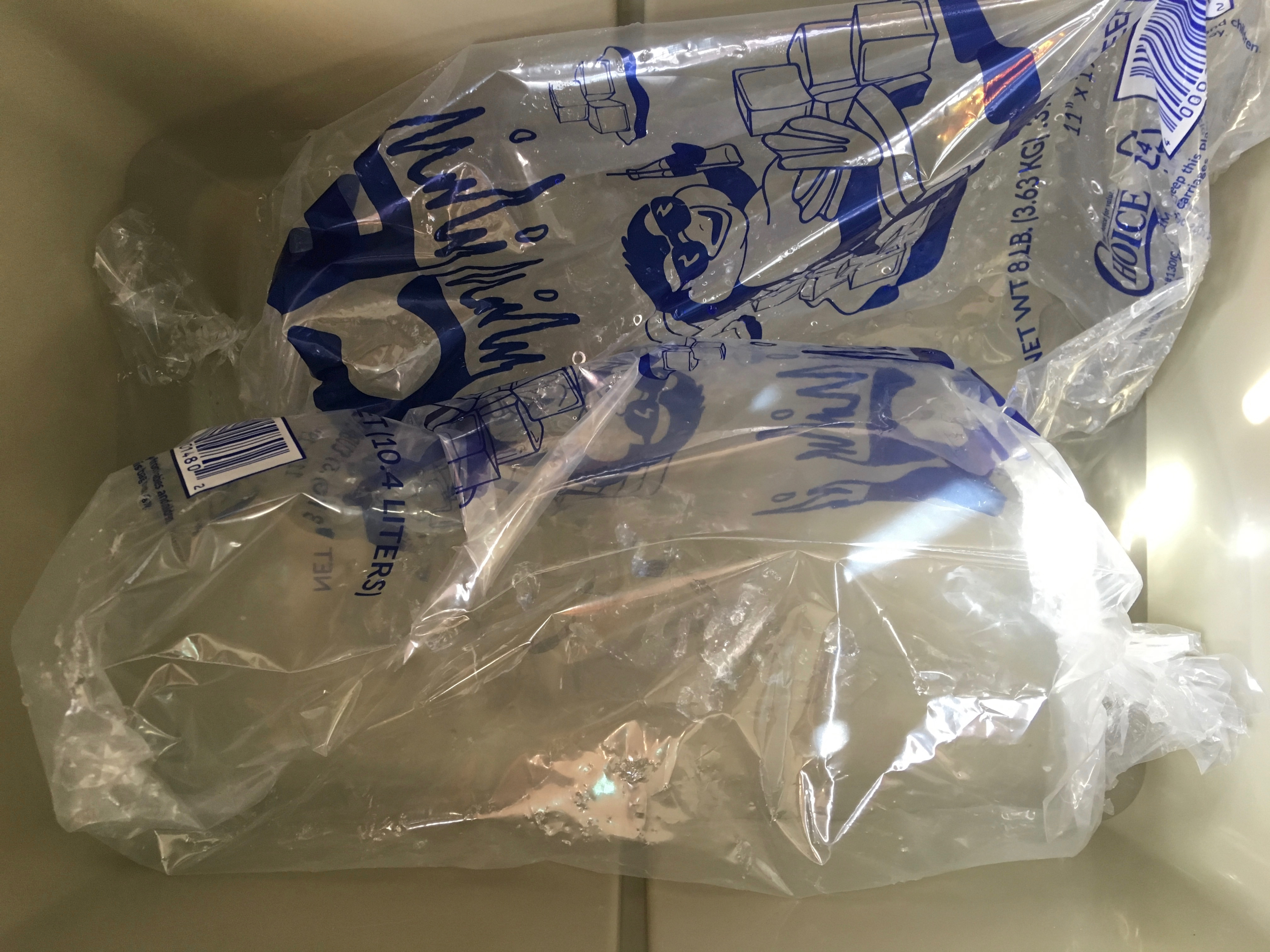
Carissa Stanz
So Which Cooler Should You Buy?
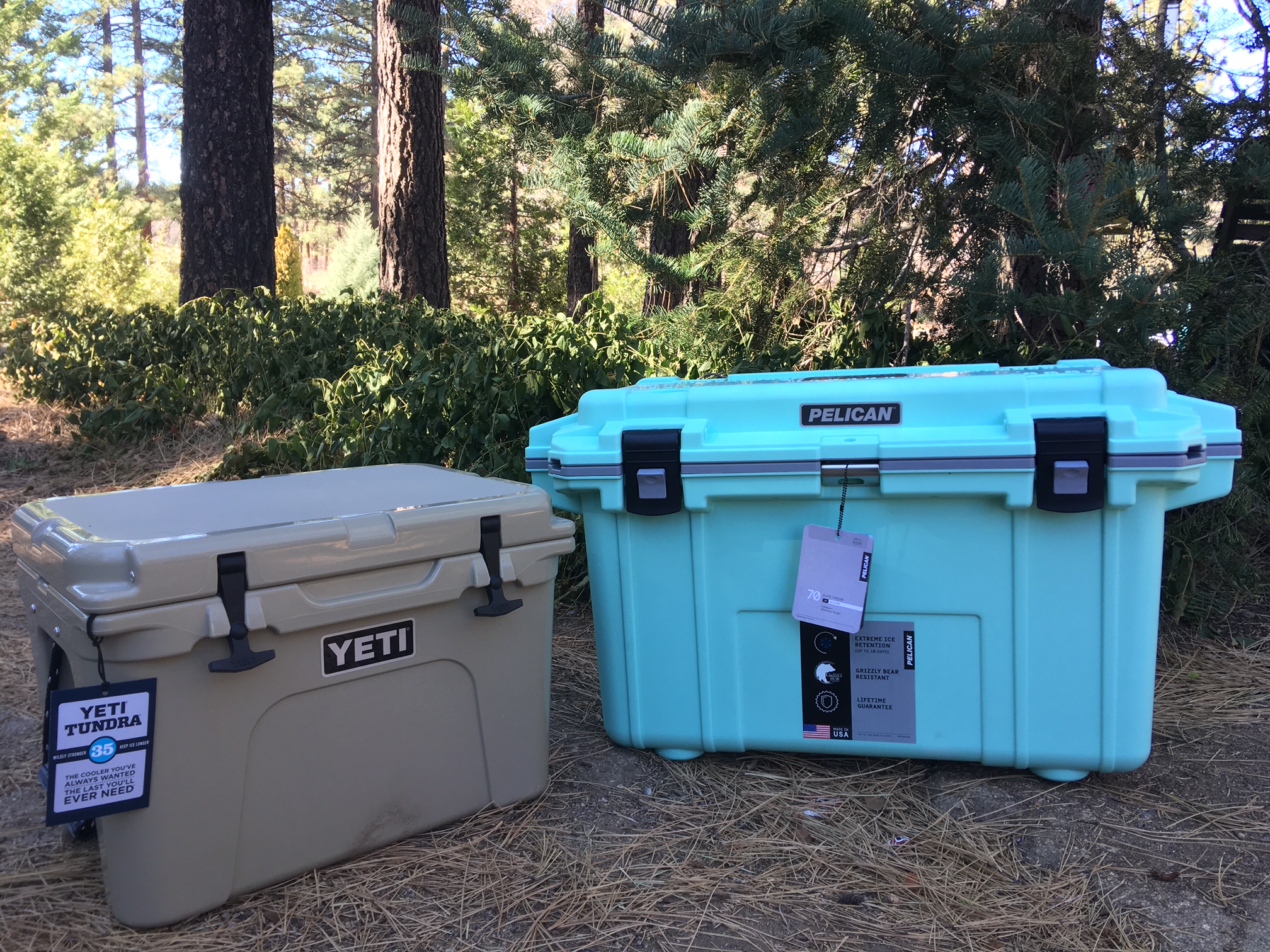
Carissa Stanz
When it comes to the Pelican vs YETI debate, I'm convinced after this test that it's a matter of preference. Both of these high-end coolers are rock solid buys that are worth the price point. When it comes down to it, it's really a matter of the specs that matter most to you personally. Both will perform well in keeping food and beer chilled for an extended period of time.
To determine the best cooler for you, let's take a look at what each brand has to offer.
Pelican
https://www.instagram.com/p/BbK1aUunaxU/?taken-by=pelicancoolers
The Pelican 70QT Elite has a polypropylene body, stainless steal hardware, and 2" thick insulation consisting of polyurethane foam allowing for a longer ice retention. The ABS plastic latches are press and pull style, while the attached screw on drain plug is threaded for your average garden hose. The rubber feet on the bottom are designed to prevent sliding in the back of the cab, while the top of the cooler can easily double as a table or measuring device - both in and cm ruler - for the catch of the day. With four molded cup holders and a bottle opener to boot, this cooler comes packed ready to party.
As a bonus, the Pelican Elite series is certified bear-proof from the Interagency Grizzly Bear Committee, comes with a lifetime warranty, and is made in the USA.
While you could haul these bad boys anywhere, the design features and heavier weight make it ideal for food transportation, car camping, hunting trips, and boating trips. When compared to the YETI in price, Pelicans have a lower price point, which is certainly another plus and something to consider when making your purchase. Did I mention it comes in a wide variety of colors?
Note: While features may vary throughout the line, much of this is standard for the Elite series line.
YETI
The YETI Tundra 35 has a FATWALL™ design containing a 2" thick Permafrost insulation made of commercial-grade polyurethane foam with an INTERLOCK™ lid system and COLDLOCK™ freezer-grade gasket keeping the heat out and the cold in. The heavy duty rubber latches make for easy locking, while the DOUBLEHAUL™ military grade rope handles and LIPGRIP™ handles offer two methods of lugging this cooler around. There's also a BEARFOOT™ non-slip feet so it stays in one place on road trips and ANCHORPOINT™ tie down slots so it won't rock around on the boat. If you're worried about draining the ice ones it finally melts, there's a VORTEX™ drain system so you aren't left with a pool in water when trying to empty out the cooler.
As a bonus, all YETI coolers are grizzly bear-proof, come with a five year warranty, and include one dry good basket. If you're wondering who makes the cooler, the Tundra series comes from factories in Iowa, Wisconsin, and the Philippines.
Camping, hunting, fishing, or tailgating, the YETI is easy to transport for any event. Some - including the Tundra 35 - even fit nicely on a raft or in an inner tube. The only drawback you'll get with this premium cooler series is that the price point is on the higher side.
Note: While certain features may vary, these are standard for most of the YETI Tundra coolers.
Sleek designs, comparable features, and differing price points, it's all about your own preference. So which cooler will you buy?
